First documented records of the Blue-winged Pitta Pitta moluccensis breeding in Singapore.
BING WEN LOW, ALFRED CHIA, GIM CHEONG TAN, WEE JIN YAP & KIM KEANG LIM
(This article was first published in BirdingASIA 26 (2016) under Important Breeding Record)
Introduction:
The Blue-winged Pitta Pitta moluccensis is a widespread non-breeding visitor to the Malay Peninsula, with breeding previously considered to be confined to the Malaysian states of Perlis and Kedah, including Langkawi island (Wells 2007). However, in 2005 breeding was recorded at Kuala Tahan, Taman Negara National Park, significantly increasing the species’s known breeding range on the Malay Peninsula (Hutchinson & Mears 2006). In Singapore, the Blue-winged Pitta is classified as an uncommon winter visitor and passage migrant that is recorded annually with an earliest date of 7 October and latest of 12 April (Lim 2009). However, since 2008 there has been an increasing number of reports of Blue-winged Pittas calling between late April and July. Most of these reports emanate from western Singapore, around the periphery of a military training area, but similar reports have also been received from northern Singapore and Pulau Ubin, an island off the main island’s north-east coast in the channel separating Singapore and Malaysia. Here we document the first confirmed breeding records of Blue-winged Pitta in Singapore, based on observations at two nest sites on Pulau Ubin in July and August 2016.
Observations in the field
On 9 July 2016, WJY observed two adult Blue-winged Pittas carrying earthworms, apparently to an unseen nest in an area of regenerating secondary forest on the eastern end of Pulau Ubin (Plate 1).
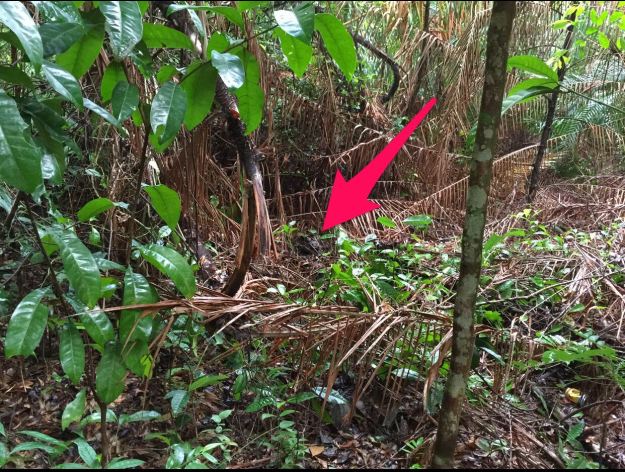 Plate 1. The first Blue-winged Pitta Pitta moluccensis nest (arrowed) at Pulau Ubin, Singapore, among the dead fronds of a rattan grove, July 2016. Alfred Chia.
Plate 1. The first Blue-winged Pitta Pitta moluccensis nest (arrowed) at Pulau Ubin, Singapore, among the dead fronds of a rattan grove, July 2016. Alfred Chia.
On 14 July GCT and a small team of helpers searched for and located an active nest. The area is an abandoned rubber plantation; consequently most of the bigger trees are rubber Hevea brasiliensis. The understorey is, however, floristically diverse and features a variety of shrubs and climbers. The nest was at ground level amongst the dead fronds of rattans Calamus erinaceus, and comprised a roughly spherical mound of dried leaves and twigs bound together with mud (Plate 2). The mould measured 22 × 20 cm with a depth of 17 cm and an entrance hole 11 × 9 cm. It was located a mere 4.3 m from an unpaved track popular with recreational hikers and cyclists, particularly at weekends.
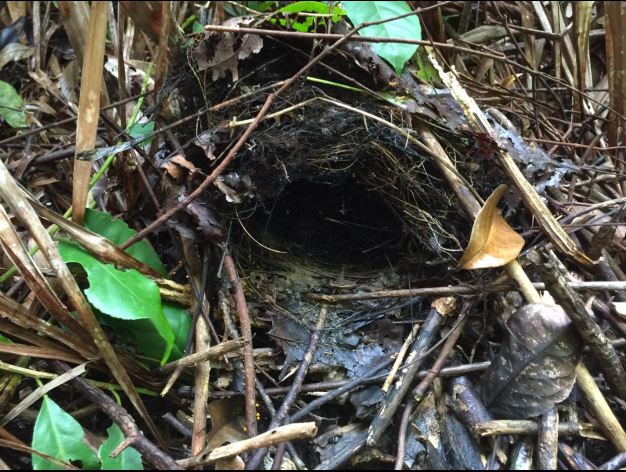
Plate 2. The nest, a roughly spherical mound, was constructed using sticks and vegetation bound together with mud, July 2016. Alfred Chia.
When the nest was first found on 14 July, four chicks were present. They were estimated to be at least a week old, given the presence of pin feathers and that the parents were already feeding them on 9 July. In order to document feeding behaviour without undue disturbance, cameras switched to video mode were left to record nest visits when observers were in the general area. It was observed that both parents returned as frequently as every two minutes to tend to the chicks. The parents could be differentiated from behind, based on the width of their dark crown stripe, with one individual having a noticeably broader stripe than its partner (Plate 3). It was not clear whether this was due to differences in feather wear or individual variation.
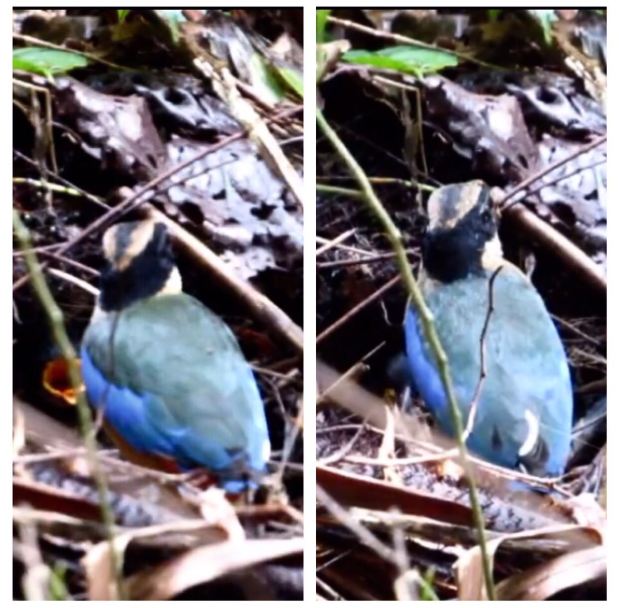
Plate 3. The parent birds could be distinguished by the difference in the width of their crown stripe, July 2016. Alfred Chia.
Nest visits generally lasted between 16 and 40 seconds, with longer visits associated with the feeding of young and removal of faecal sacs. The parents also made short visits to the nest for the sole purpose of faecal sac removal. The primary food for the chicks was earthworms, which were collected by the parents in areas of bare earth and small gullies close to the nest (Plate 4). It was surprising that while one parent incessantly uttered alarm calls whenever humans were within 15 m of the nest, the other parent (with the narrower crown stripe) continued visiting the nest silently to feed the young. At other times, one parent uttered the loud alarm call from a hidden position while the other gave a slightly longer, lower-pitched whirrr at intervals of between one and three seconds. This alternative warning call was often accompanied by ‘wing-flicking’—the rapid opening and closing of the wings.
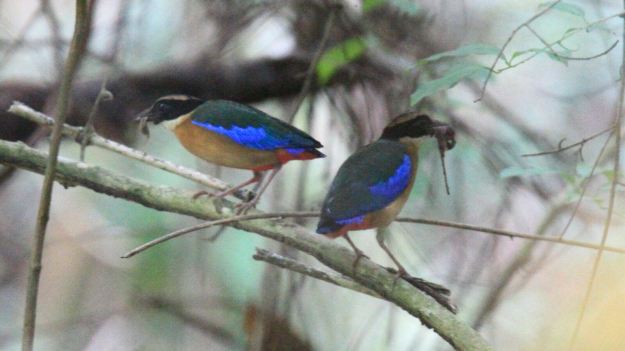 Plate 4. The parent birds returned to the nest frequently with copious quantities of earthworms, 9 July 2016. Yap Wee Jin.
Plate 4. The parent birds returned to the nest frequently with copious quantities of earthworms, 9 July 2016. Yap Wee Jin.
Although the brood comprised four chicks, it was apparent that the bulk of the food was fed to the three chicks closest to the entrance of the mound. On 19 July, all four chicks left the nest between 12h42 and 17h01 (Plate 5); they left progressively, in their own time, even though the fourth chick appeared underdeveloped compared with its siblings (Plate 6). The three stronger chicks were already capable of short flights to perches 3 m above the ground, whilst the fourth could only hop on the forest floor. Assuming the chicks were around a week old on 14 July, the estimated fledging period was about 14 days.
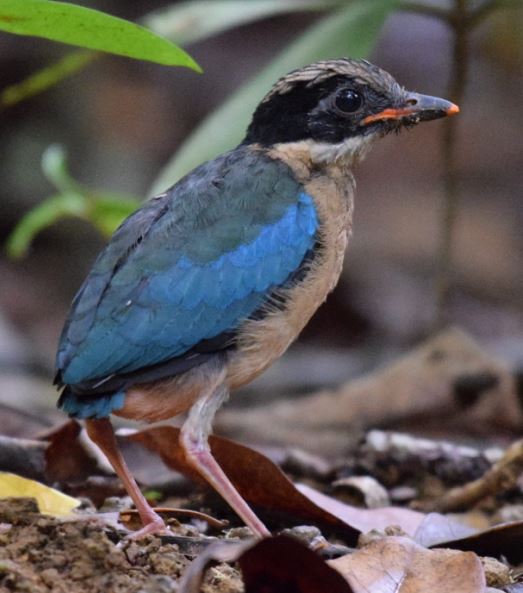
Plate 5. One of the three stronger chicks during its first foray out of the nest, 19 July 2016. Tan Gim Cheong.
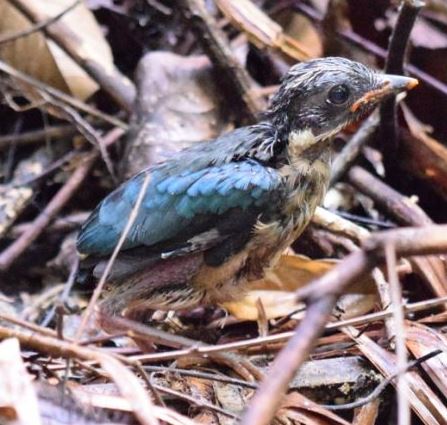
Plate 6. Compared to its three siblings, the fourth chick was noticeably weaker and less well-developed when the family fledged, 19 July 2016. Tan Gim Cheong.
During subsequent visits on 21 and 23 July, we observed a single fledgling about 50 m from the nest site; by this time it was already independent, capable of foraging alone and undertaking flights between trees (Plate 7). While the fate of the rest of the clutch is unclear, the observation of the lone juvenile foraging independently three days after leaving the nest suggests that the fledglings become independent very quickly. However, the parent birds were still very protective and one of them continued to utter alarm calls incessantly whenever observers approached within 15 m of the fledgling. The parents were also observed to make short circular flights and hops around observers, flicking their wings frequently to show their white wing patches, presumably to act as a distraction and on at least one occasion both parents were observed to make alarm calls, alternating with wing-flicking.
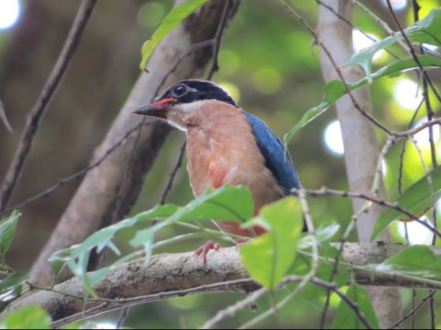
Plate 7. Soon after leaving the nest, one of the fledglings was already a confident flier that frequently perched in the mid-storey, 21 July 2016.
Alfred Chia
On 23 July, a second nest was discovered by KKL deeper in the forest, about 50 m from the original nest; it was similar in construction to the first nest. On 28 July, a single egg was found in the new nest and thereafter one egg was laid every day until 1 August—a clutch of five eggs (Plate 8).
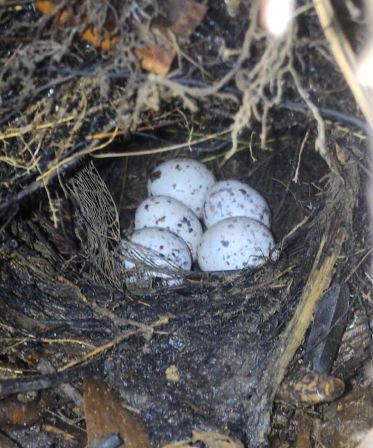
Plate 8. The second Blue-winged Pitta nest found at Pulau Ubin showing the clutch of five eggs, 2 August 2016. Tan Gim Cheong.
The parents only started brooding on 2 August after all five eggs had been laid. During the incubation period, the parents took turns incubating and were occasionally observed to turn the eggs. On 14 August, 18 days after the discovery of the first egg, three chicks hatched and the remaining two eggs hatched the following day (Plate 9). During the period when there were both eggs and chicks to care for, the parents were observed to take turns feeding chicks and incubating. They also consumed the egg shells once the chicks had hatched.
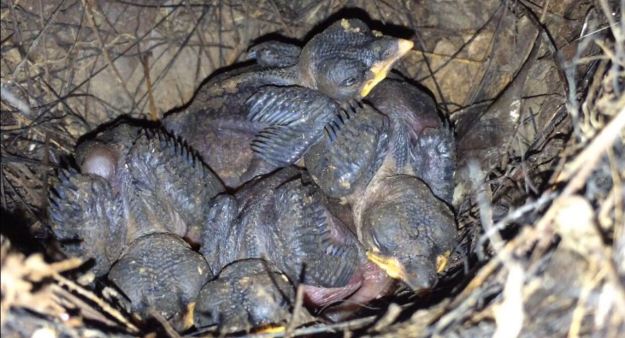 Plate 9. All five eggs in the second nest hatched successfully by 15 August 2016. Low Choon How.
Plate 9. All five eggs in the second nest hatched successfully by 15 August 2016. Low Choon How.
During observations on 17 August, it was noted that nest visits lasted between 33 and 255 seconds, with intervals of from 1 to 19 minutes between visits. Parents were observed to either remove or consume faecal sacs and, in contrast to the first nest, alarm-calling was minimal, possibly due to the greater distance of the second nest from the trail. Unfortunately, this nesting attempt may not have had a positive outcome. On 18 August, the parents were seen to remove a dead chick from the nest and on 21 August we found that all the chicks had disappeared. As the chicks were only seven days old, unable to fly and completely dependent on their parents, it is most likely that they were predated.
Discussion:
The discovery of Blue-winged Pitta breeding in Singapore is significant both as an extension of the breeding range by about 400 km to the south-east but also because it may change our understanding of the status and movements of the species on the Malay Peninsula. The first reports of Blue-winged Pitta from Singapore outside the established wintering/migration period were in July 2008 when two individuals were heard calling vociferously on the Kranji Nature Trail (Low 2008, Lok et al. 2009); the species could already have bred in Singapore when the Taman Negara NP record was documented. We can now confirm that the breeding range of this species extends to the most southerly point of the Malay Peninsula, also raising the possibility of breeding on the islands of the Greater Sundas. The forest near the eastern end of Pulau Ubin is regenerating on abandoned rubber plantations. Similarly, most of the Blue-winged Pittas heard calling have been reported from western Singapore, where the forest has regenerated from land that was previously used for plantations or village agriculture (Yee et al. 2016). This is in line with published literature which notes the species’ preference for secondary growth as breeding habitat (Wells 2007). This habitat preference may also explain why the species has not been recorded breeding in southern Peninsular Malaysia, where there is little observer effort because the majority of visiting birdwatchers opt to visit remnant tracts of rainforest instead of secondary growth. There is no confirmatory evidence that the birds breeding in Singapore are resident—they may winter in Sumatra or elsewhere. In Singapore, anecdotal evidence such as birds colliding with windows shows that good numbers of Blue-winged Pittas move through the city-state on migration (BWL pers. obs.).
Acknowledgements:
We thank Low Choon How and Alan Owyong for their active involvement in documenting the nesting record and for useful discussion.
References:
Hutchinson, R. & Mears, A. (2006). Extension of the breeding range of Blue-winged Pitta Pitta moluccensis in peninsular Malaysia. Forktail 22: 119–120.
Lim K. S. (2009) The avifauna of Singapore. Singapore: Nature Society (Singapore).
Lok A. F. S. L., Khor K. T. N., Lim K. C. & Subaraj, R. (2009) Pittas (Pittidae) of Singapore. Nature in Singapore 2: 155–165.
Low, A. (2008) Bird Report. Singapore Avifauna 22(7): 1–25.
Wells, D. R. (2007) The birds of the Thai-Malay Peninsula, 2. Princeton: Princeton University Press.
Yee A. T. K., Chong K. Y., Neo L. & Tan H. T. W. (2016) Updating the classification system for the secondary forests of Singapore. Raffles Bull. Zool. 32: 11–21.

Wow! Excellent observation and documentation of these species of pitta in their threaten habitat. Well done! and thank you for sharing.
LikeLike
Dear Wendy, thanks for your compliments. This long awaited record is a boost for birding in Singapore coming close to the news about the Straw-headed Bulbul in Singapore. Contributions from everyou bird watcher and photographer is important.
LikeLike
Dear Alan OwYong, I would like to add on to my comment. Yourself and the rest of the observers involved were very dedicated. Kudos! Did they return to Chek Jawa daily to observe the nesting?
LikeLike
Yes we did. Nparks staff and the Bird Group members took turns to do the monitoring over the whole period.
LikeLike
Awesome!
LikeLike
Pingback: What bird is this, and why? – Singapore Birds Project
Pingback: The first sighting of a juvenile Blue-winged Pitta on mainland Singapore. | Singapore Bird Group